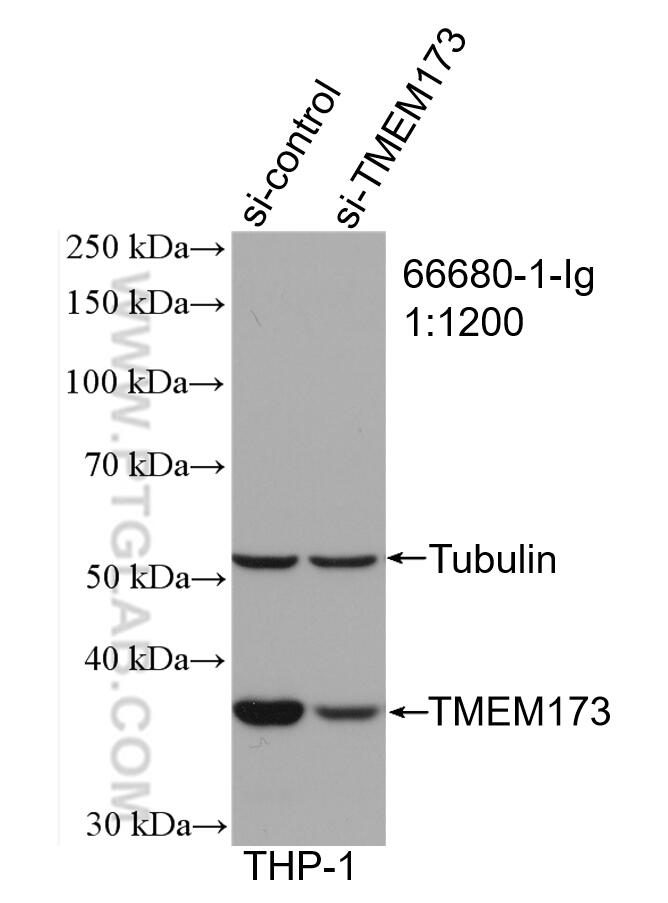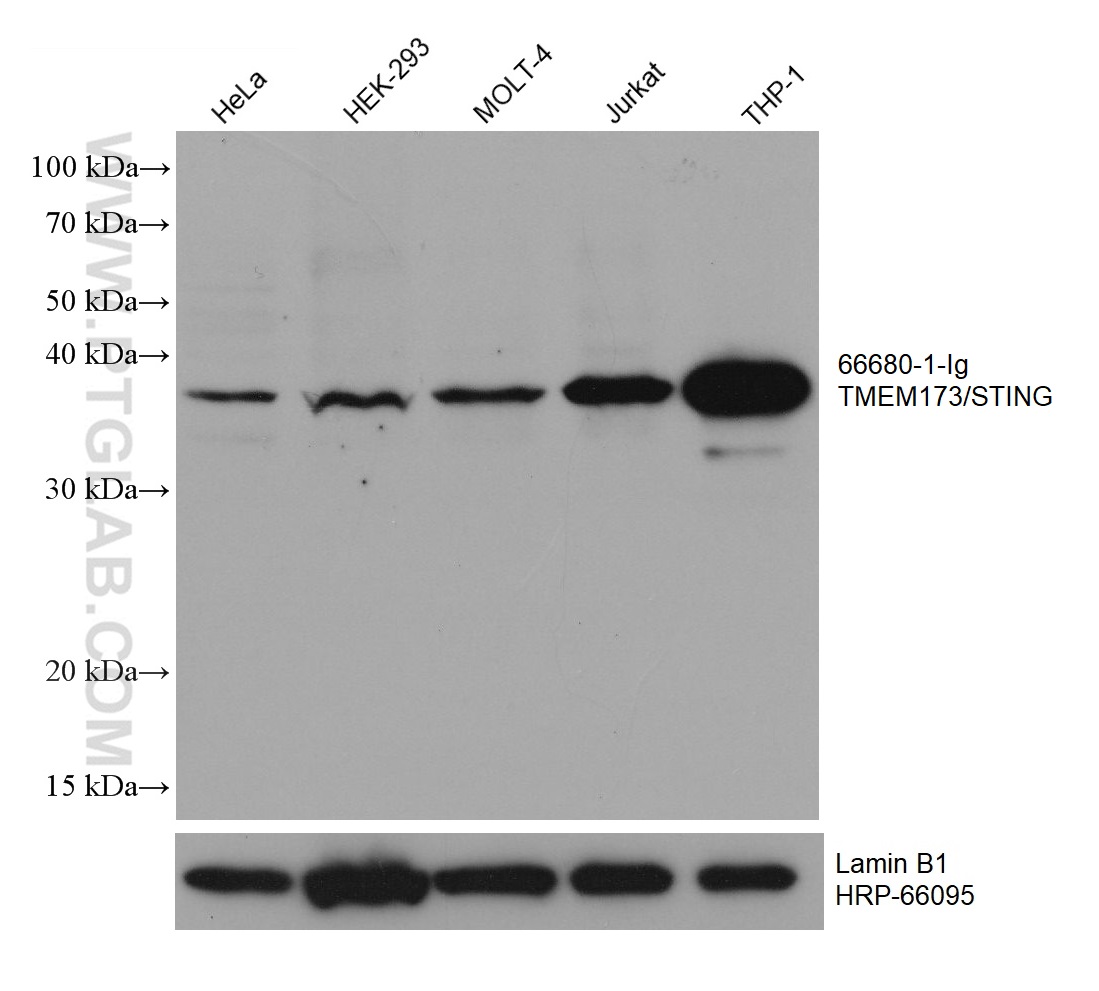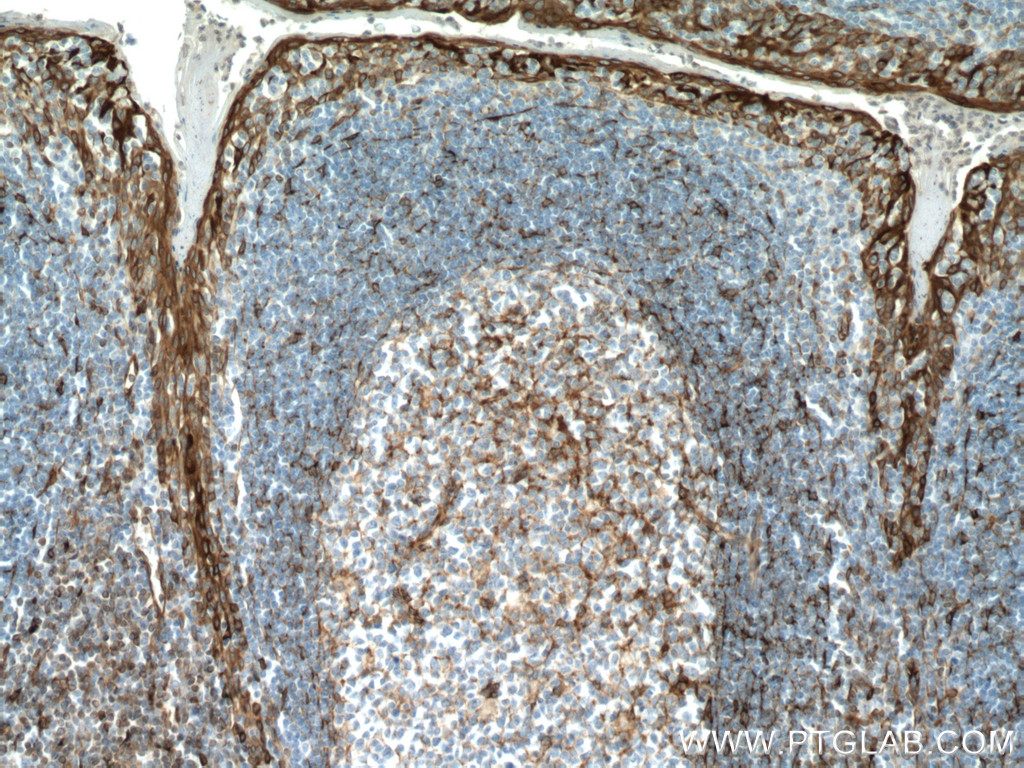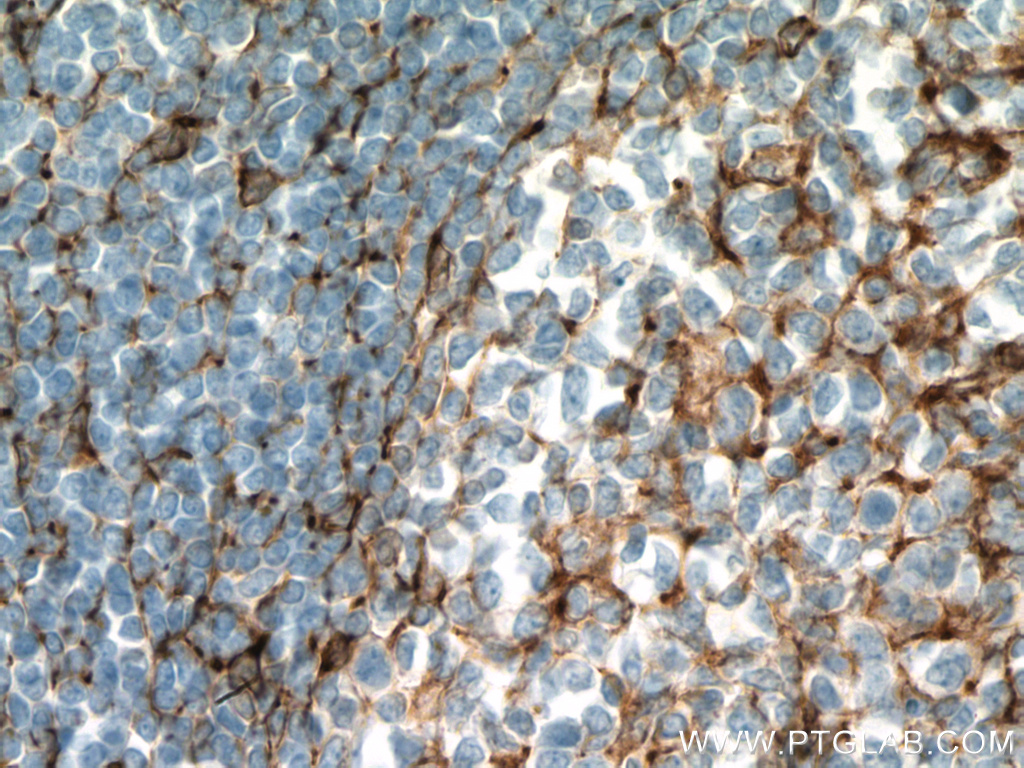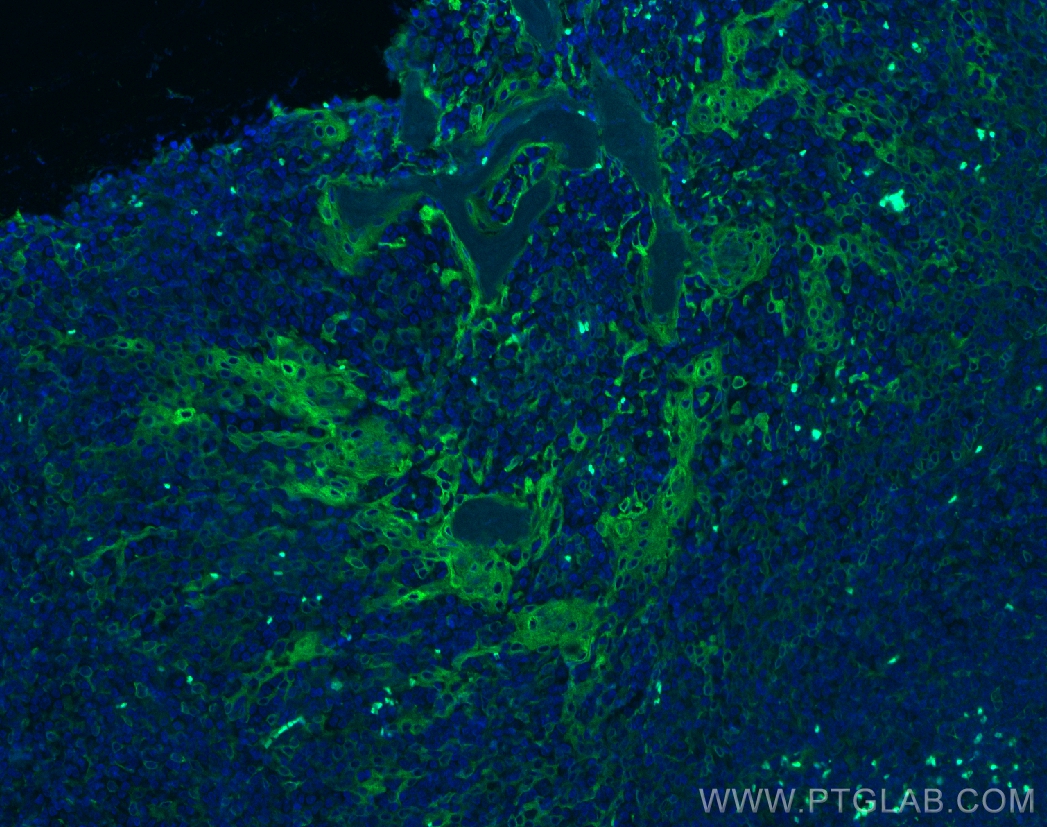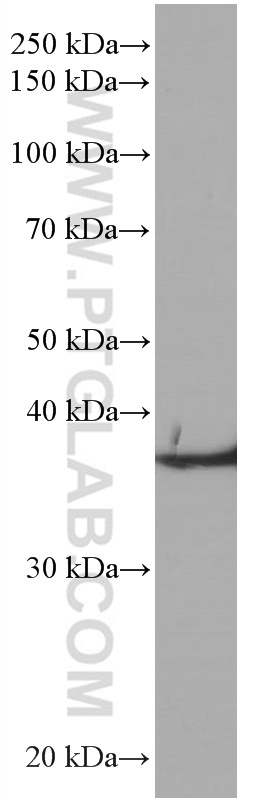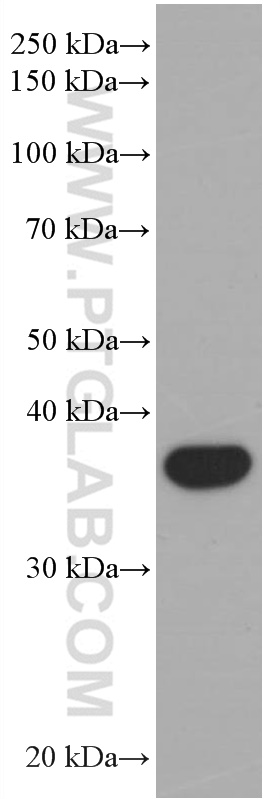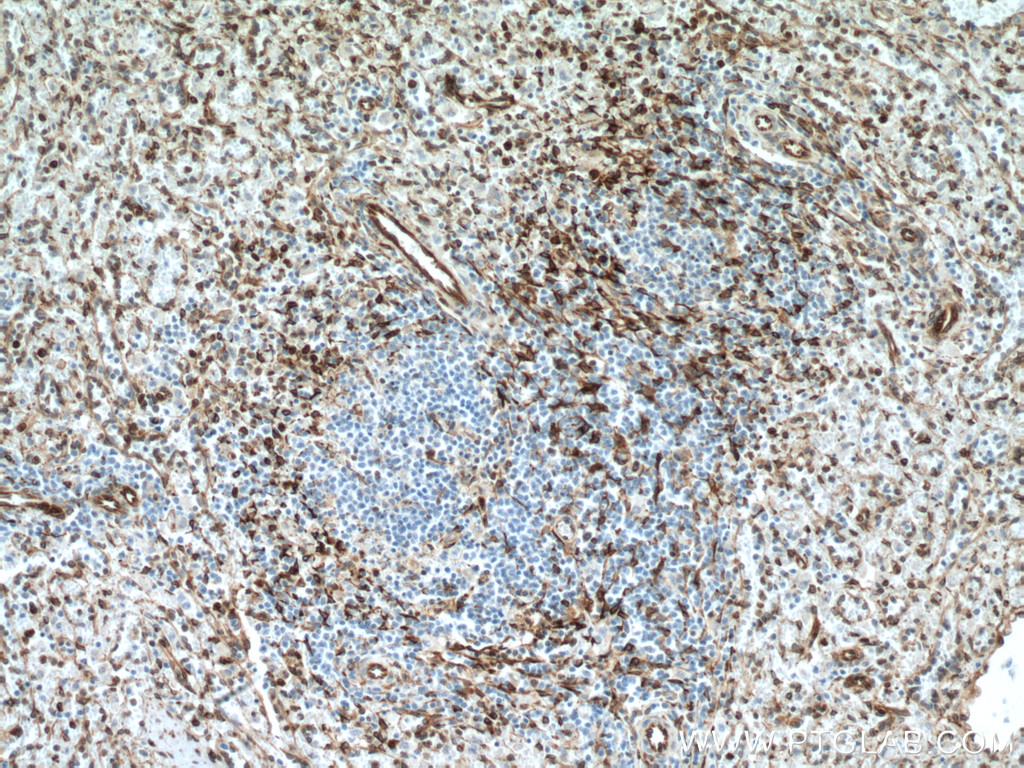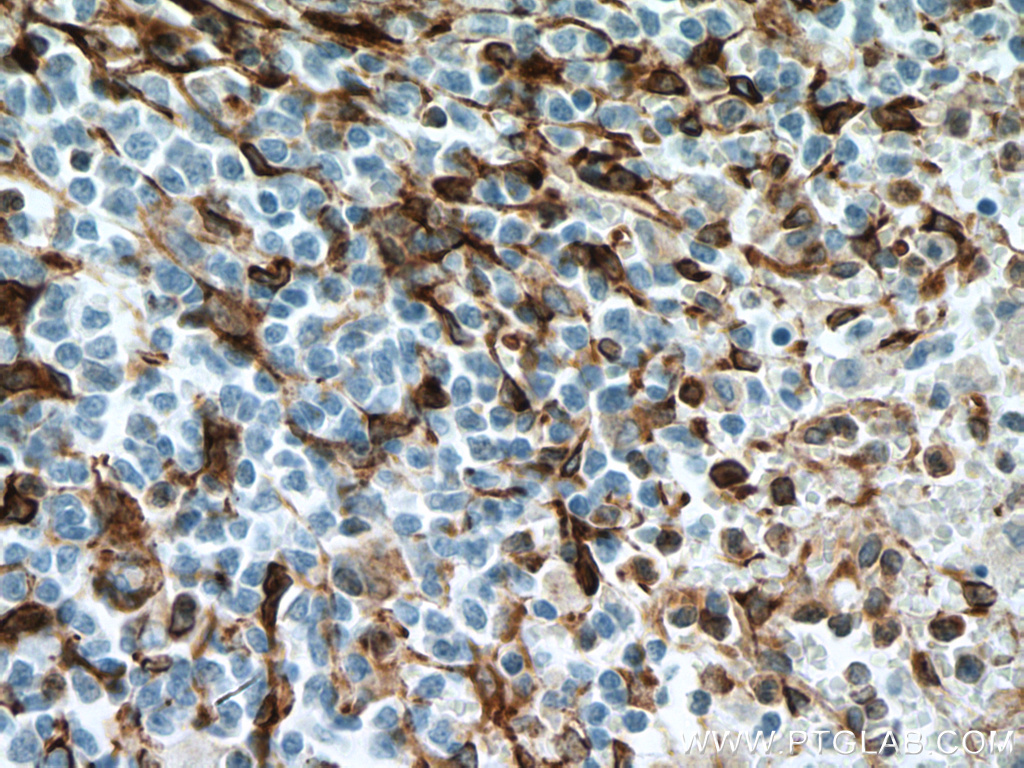验证数据展示
经过测试的应用
| Positive WB detected in | HeLa cells, HepG2 cells, HSC-T6 cells, HEK-293 cells, THP-1 cells, MOLT-4 cells, Jurkat cells |
| Positive IHC detected in | human tonsillitis tissue, human spleen tissue Note: suggested antigen retrieval with TE buffer pH 9.0; (*) Alternatively, antigen retrieval may be performed with citrate buffer pH 6.0 |
| Positive IF-P detected in | human tonsillitis tissue |
推荐稀释比
| 应用 | 推荐稀释比 |
|---|---|
| Western Blot (WB) | WB : 1:5000-1:50000 |
| Immunohistochemistry (IHC) | IHC : 1:500-1:2000 |
| Immunofluorescence (IF)-P | IF-P : 1:200-1:800 |
| It is recommended that this reagent should be titrated in each testing system to obtain optimal results. | |
| Sample-dependent, Check data in validation data gallery. | |
产品信息
66680-1-Ig targets TMEM173/STING in WB, IHC, IF-P, IP, ELISA applications and shows reactivity with human, rat samples.
| 经测试应用 | WB, IHC, IF-P, ELISA Application Description |
| 文献引用应用 | WB, IHC, IF, IP |
| 经测试反应性 | human, rat |
| 文献引用反应性 | human, rat |
| 免疫原 |
CatNo: Ag20363 Product name: Recombinant human TMEM173 protein Source: e coli.-derived, PET28a Tag: 6*His Domain: 174-379 aa of BC047779 Sequence: ELQARIRTYNQHYNNLLRGAVSQRLYILLPLDCGVPDNLSMADPNIRFLDKLPQQTGDHAGIKDRVYSNSIYELLENGQRAGTCVLEYATPLQTLFAMSQYSQAGFSREDRLEQAKLFCRTLEDILADAPESQNNCRLIAYQEPADDSSFSLSQEVLRHLRQEEKEEVTVGSLKTSAVPSTSTMSQEPELLISGMEKPLPLRTDFS 种属同源性预测 |
| 宿主/亚型 | Mouse / IgG2b |
| 抗体类别 | Monoclonal |
| 产品类型 | Antibody |
| 全称 | transmembrane protein 173 |
| 别名 | STING, NET23, MPYS, MITA, ERIS |
| 计算分子量 | 379 aa, 42 kDa |
| 观测分子量 | 37 kDa |
| GenBank蛋白编号 | BC047779 |
| 基因名称 | STING |
| Gene ID (NCBI) | 340061 |
| RRID | AB_2882034 |
| 偶联类型 | Unconjugated |
| 形式 | Liquid |
| 纯化方式 | Protein A purification |
| UNIPROT ID | Q86WV6 |
| 储存缓冲液 | PBS with 0.02% sodium azide and 50% glycerol, pH 7.3. |
| 储存条件 | Store at -20°C. Stable for one year after shipment. Aliquoting is unnecessary for -20oC storage. |
背景介绍
Stimulator of interferon genes (STING, also known as ERIS, MITA and MPYS, and encoded by TMEM173) is a transmembrane adaptor protein that facilitates innate immune signaling (PMID: 18724357). STING is widely expressed in various cell types such as endothelial cells, epithelial cells, T cells, macrophages, and dendritic cells (PMID: 26603901). It is predominantly located in the endoplasmic reticulum (ER). STING functions as a sensor of cytosolic DNA and promotes the production of type I interferons and pro-inflammatory cytokines. STING is a 379 amino acid protein with a calculated molecular weight of 42 kDa. It has been observed at 35-40 kDa (PMID: 27324217; 29632140; 30918080), and 70-80 kDa corresponding to the expected size of a STING dimer (PMID: 25790474; 29491158).
实验方案
| Product Specific Protocols | |
|---|---|
| IF protocol for TMEM173/STING antibody 66680-1-Ig | Download protocol |
| IHC protocol for TMEM173/STING antibody 66680-1-Ig | Download protocol |
| WB protocol for TMEM173/STING antibody 66680-1-Ig | Download protocol |
| Standard Protocols | |
|---|---|
| Click here to view our Standard Protocols |
发表文章
| Species | Application | Title |
|---|---|---|
Immunity Golgi apparatus-synthesized sulfated glycosaminoglycans mediate polymerization and activation of the cGAMP sensor STING. | ||
Cell Death Differ The DJ1-Nrf2-STING axis mediates the neuroprotective effects of Withaferin A in Parkinson's disease.
| ||
Cell Death Differ Inhibition of cGAS-STING by JQ1 alleviates oxidative stress-induced retina inflammation and degeneration. | ||
J Nanobiotechnology Platelet hitchhiking vascular-disrupting agents for self-amplified tumor-targeting therapy | ||
Autophagy Lipotoxicity-induced STING1 activation stimulates MTORC1 and restricts hepatic lipophagy.
| ||
J Neuroinflammation The BET PROTAC inhibitor dBET6 protects against retinal degeneration and inhibits the cGAS-STING in response to light damage |

